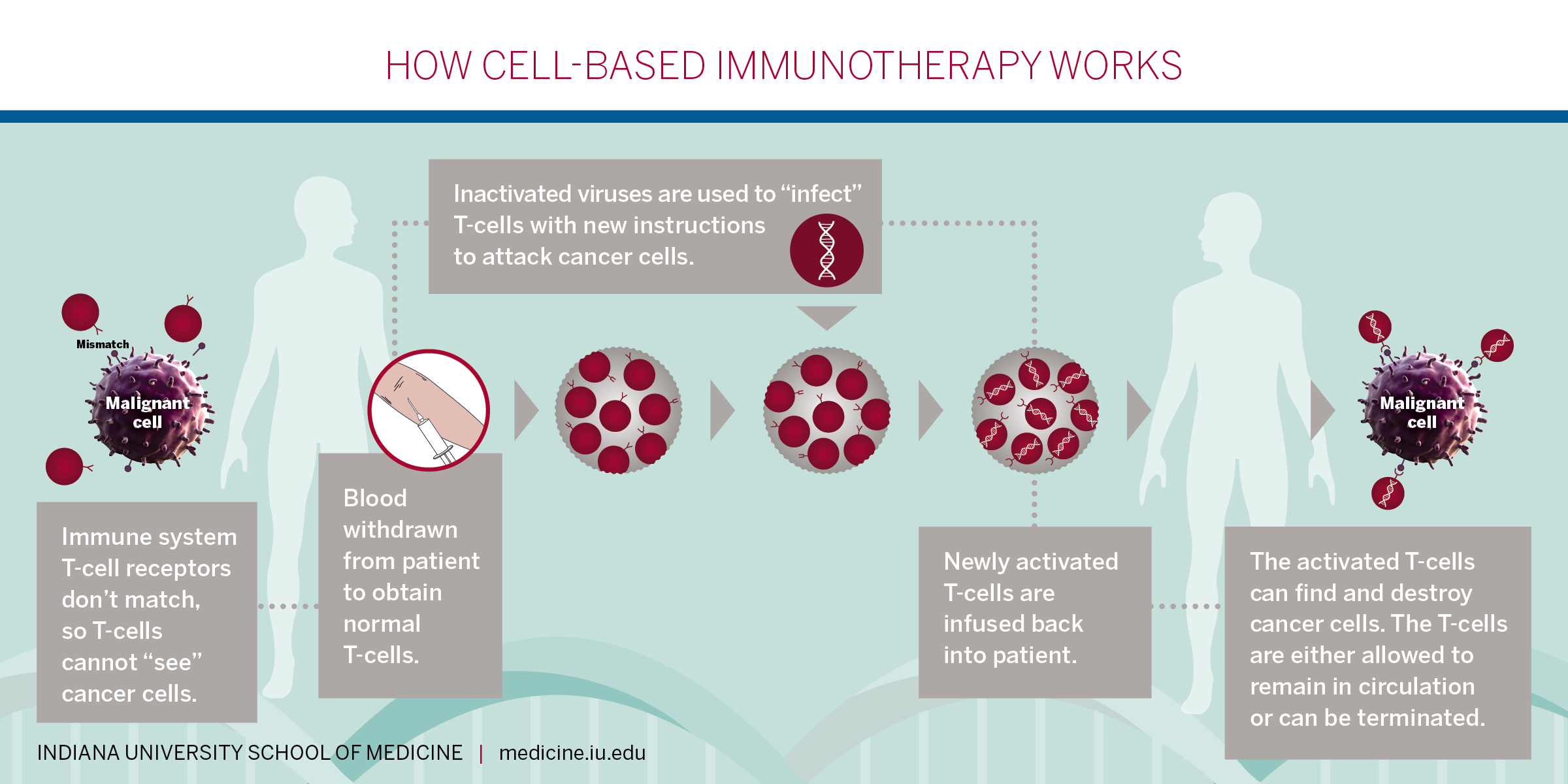Spurring the human immune system to fight disease
Cancer researchers and other medical scientists call immunotherapy one of the most promising advances in recent decades—if not the entire history of medicine.
Cancer researchers and other medical scientists call immunotherapy one of the most promising advances in recent decades—if not the entire history of medicine.
On the surface, it sounds simple: Immunotherapy retrains the immune system to identify and hunt down cancer and other disease cells. In the lab and in the clinic, it’s a highly advanced technology that’s changing lives.
Cancer and other diseases are able to thrive in part because their cells evade the body’s natural defense system. Cell-based immunotherapy seeks to reboot the immune system to seek out and attack these disease cells.
T cells—a type of immune cell—are extracted from a patient and engineered in a laboratory to recognize specific antigens on tumor cells through the insertion of a chimeric antigen receptor.

Such modified T cells are known as chimeric T cells, or CAR T cells. Thousands of the CAR T cells are created and infused into the patient’s bloodstream. The cells act as a living drug that hunts down and kills cancer cells.
Importantly, these reprogrammed immune cells survive in the body for years, constantly patrolling for cancer cells and attacking them as they appear.
The beauty of immunotherapy—unlike chemotherapy—is that it is a living drug. Using re-engineered T cells to treat cancer has fundamentally changed outcomes for leukemia and multiple myeloma patients.
Kelvin Lee, MD — Director, IU Simon Comprehensive Cancer Center
The primary target in immunotherapy treatments so far has been cancer. We’re also hopeful that these developing techniques can be applied to neurodegenerative disorders, including Alzheimer’s disease and other diseases.
Two forms of cancer that have proven extremely difficult to treat effectively–multiple myeloma and triple-negative breast cancer–have been selected as initial targets for center researchers.
In some cases, immunotherapy has resulted in dramatic, long-lasting improvements in patients for whom all standard treatments have failed to the point that they were declared cancer-free.
In other cases, patients improved significantly but then relapsed. And in others, immunotherapy has shown no significant benefit.
All new therapies carry risks. With immunotherapy, researchers and clinicians are learning that they must monitor patients closely in case their immune systems, having been energized to fight cancer, then begin to mount attacks against the patient’s organs.
In some cases, such immune system attacks have been fatal, or have resulted in chronic diseases such as diabetes.
Some new immunotherapy drugs have proven to be extremely expensive. Because the CAR T approach is an early, experimental therapy, the costs are difficult to estimate.
Initially, in more widespread use, CAR T therapy will not be inexpensive, and hopefully the costs will drop over time.
Donor support is crucial to advancing discoveries that will have the most meaningful impact on life-changing immunotherapies. You can help us make it happen.
Brown Center for Immunotherapy
980 W. Walnut St., Walther Hall
Indianapolis, IN 46202
Phone: (317) 278-6969
Email: iubrown@iu.edu